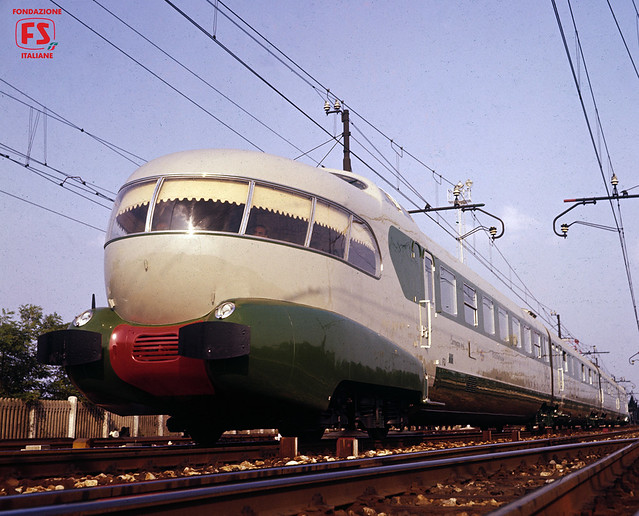Fondazione FS Italiane: the 60’s Arlecchino "express" is set to travel again
Rome, 1 April 2016
The electric train Arlecchino, born in the 60s from a “rib” of Settebello (the mythical Rome-Milan express, precursor of Pendolino) is set to travel again on itineraries of historical and landscape significance identified by Fondazione FS Italiane for the pleasure of rail tourism enthusiasts.
The sole surviving model of Gruppo ETR 250 has been transferred from the Depot of the former presidential Train in Roma Termini to Porrena, in Arezzo’s province, for it be restored at the hands of "O.M.S. Ferroviaria".
The works envisage a full revision of mechanical parts and interior restyling, in full compliance with aesthetics and the original designs.
In the first months of 2017, the Electric Train will be ready to travel anew on all the electrified lines of the Italian railway network.
The Arlecchino will in fact be fitted with the modern Automatic Train Control System, which enables a thoroughly safe journey, similarly to today’s trains.
ETR 250, famous at the time for the panoramic viewpoint lounge from which one could appreciate the beauty of Italian landscapes, consists of four inseparable vehicles and is able to travel at a maximum speed in excess of as many as 180 kilometres per hour.
Restoration of the Arlecchino, allowing for the first time as it does the reuse of a luxury vintage train, capable of travelling on all the electrified Italian lines, actually opens up new scenarios to railway tourism.
According to the research conducted by IPRMarketing and Fondazione UniVerde, presented at Milan’s latest International Tourism Exchange (BIT), Italians (54%) are stating for the first time that they are attracted by the possibility of reaching their destinations by using old railways, rendered once more usable for tourist purposes.
The data is confirmed by the success attained by the initiatives of Fondazione FS: in 2015, 45 000 passengers have boarded the Foundation’s historical and tourist trains, with an increase of 60% compared to 2014.
ETR 250 began service on 23 July 1960, on the occasion of the Rome Olympics, via the inaugural trip from Bologna to Venice.
It was the symbol of Italians’ well-being and economic recovery.
The seats were comfortable and enveloping, the walls covered with vinyl leather, the panels and carpets characterized by a wide range of pastel colours (whence the name Arlecchino), accurately selected by FS, for which Sesto San Giovanni-based Breda was commissioned.
